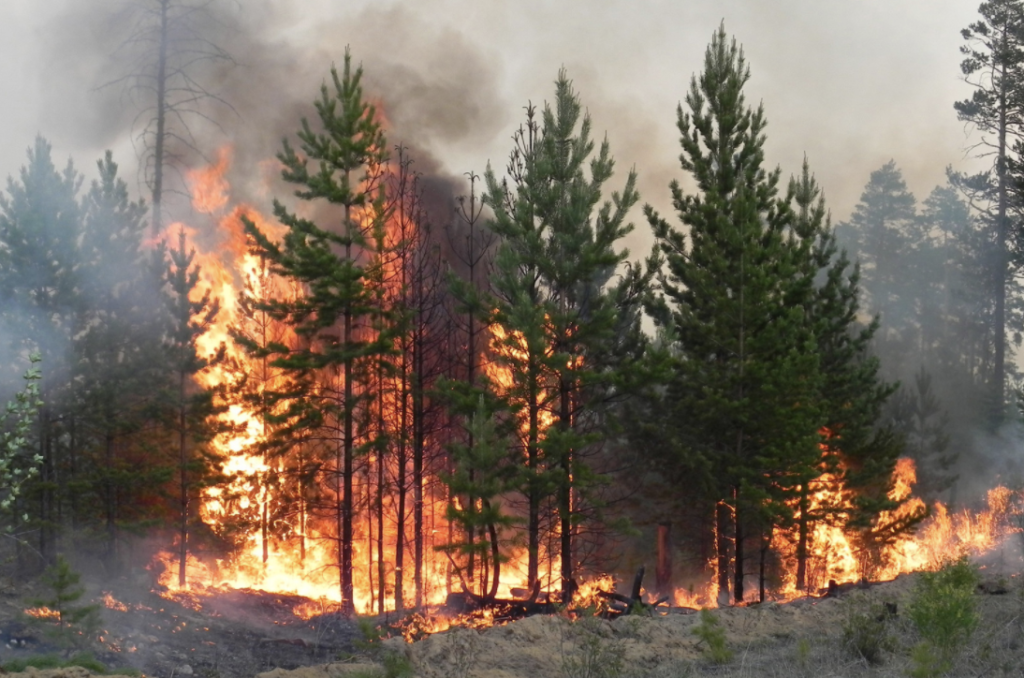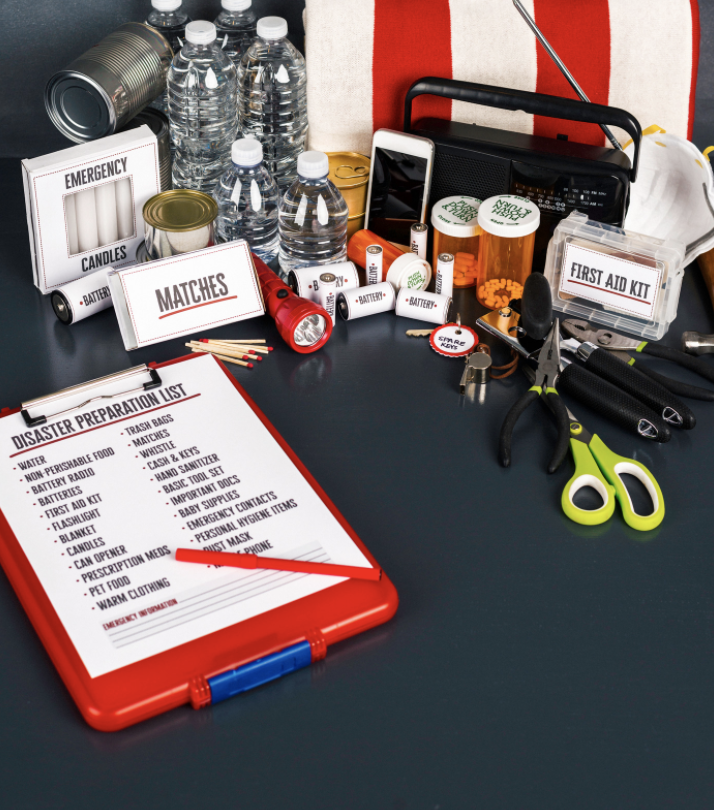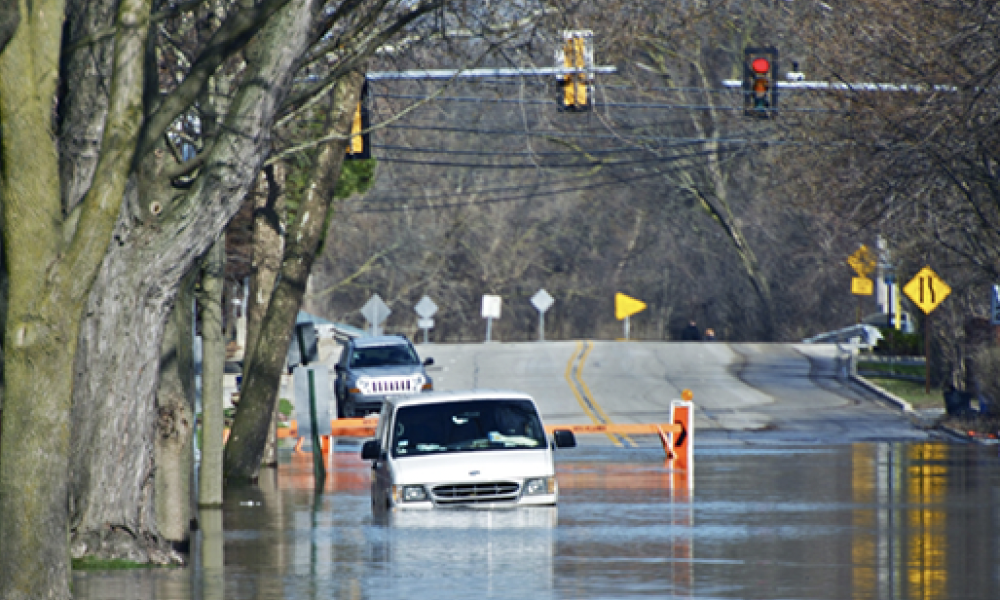No matter where you live, it is always possible a disaster could occur without warning, so it’s best to get ready before the shake, rattle, and roll begin. That is the key to surviving a disaster – to anticipate “it” before “it” reaches you.
1. Identify your risk
Due to strained financial resources, isolation, and problems with mobility, it can be challenging for some seniors to prepare for disasters. It is essential for older adults and the people who care for them to figure out how best to respond. Ideally, you should plan and prepare by asking yourself:
- What hazards are most likely to affect you?
- What natural or human-caused disasters pose the most significant risk?
- Do you live near an earthquake fault, flood plain, or high fire zone?
- Are you entirely prepped for an unexpected human-made disaster?
- Does your community have a disaster plan?
2. Assess your needs
As you plan, you’ll also want to take an objective look at your own needs.
- What medicines do you take regularly?
- Do you need regular in-office medical treatments?
- Are you fully mobile? Are you able to drive?
- Do you depend on volunteers or government agencies for meal delivery or other services?
Planning for a disaster means getting a clear sense of the help you’ll need if your community experiences a significant disruption.
3. Create a disaster plan
You can start by finding out how to get emergency information from the community. Suppose your phone or other electronics are not available, contact the neighbor next door or your local senior center. Have a plan ready to take care of your family pets, even having a friend or neighbor care for the animal.
Questions to ask family, friends about your disaster plan:
- How will I transmit emergency alerts and warnings?
- Where and what is my shelter plan?
- What is my evacuation route?
- What’s the family, friends, and neighborhood communication plan?
- Is my emergency preparedness kit up to date?

Remember, think of these factors when developing your plan:
- Dietary needs
- Medical needs including prescription drugs and durable medical equipment
- Pets or service animals
4. Learn the drill
After you have established a written plan — practice it. Just like you would after a fire or after the shaking stops – plan to meet friends, neighbors, family, or caregivers at a designated spot.
- Know first whether it’s safe to venture outdoors or whether to evacuate your neighborhood by car or on foot.
- Know the proper evacuation procedures and routes as determined by your local Oregon Emergency Services office if you must evacuate.
- Conduct a preemptive fire and emergency evacuation drill to understand the route better.
- If you cannot return home, meet at a designated place outside of the neighborhood (relatives, friends’ house, or local community center).
5. Make a disaster supply kit for your home
You should always have a disaster preparedness kit available in your home that will enable you to survive for a few days. You may even be stranded in your car. Being prepared means having enough food, water, and other vital items made to last for at least a week.
Your kit should consist of essential items your household (and pets) may need in an emergency. Be sure to store all items in airtight plastic bags and put your entire disaster supplies kit in one or two plastic containers with handles or duffle bags.
Here’s what an essential supply list for emergencies should include:
- Water (at least one gallon per day per person.)
- Food (a three-day supply of non-perishable food)
- NOAA Weather Radio with tone alert
- Battery-powered or hand-crank radio
- Flashlight
- First aid kit
- Plenty of batteries
- Whistle or horn to attract help
- Dust mask to filter contaminated air or smoke
- Duct tape and rolls of plastic sheeting to help shelter at home
- Moist towelettes for personal sanitation plastic bags with ties
- Wrench or pliers (to turn off utilities)
- Manual can opener
- Maps of the local area
- Cell phone with a backup battery and charger
6. Become well informed
- Know what disasters could affect your area, which ones could call for an evacuation, and when to shelter in place.
- Keep an NOAA Weather Radio tuned to your local emergency station and monitor TV and radio. Follow mobile alerts and warnings about severe weather in your area.
- Download the FEMA app and get weather alerts from the National Weather Service for up to five different locations anywhere in the United States.

7. Plan for your daily needs
Could you survive on your own for several days without electricity and water? You may not have access to doctors, drugstores, and hospitals after a major disaster. It’s best to plan now for your daily needs and know what to do if these resources become unavailable to you.
- Create a network of people and providers who can help you navigate during a disaster. Be sure to keep the contact list in a watertight container in your emergency kit and on your phone.
- Let people know where you keep your emergency supplies in case you are unable to retrieve them yourself. A neighbor or close friend should have a copy of your house keys in case of an emergency.
- Plan ahead to get to transportation you can access–may need this transportation for evacuation or getting around during or after the disaster.
- Know more than one facility that can help you if you are on dialysis or other therapies.
- You can ask your power provider to place you on a priority power restoration list.
Also, talk to your doctor to get other allocations during a disaster for electricity.
- It’s important to wear medical ID bands or bracelets. Be sure to add important medical information to your phones and tablets.
- If you’re having problems communicating, carry printed cards or store information on your phone to let others know how to communicate with you.
- If you rely heavily on assistive devices, plan how you will evacuate with the devices. Also, arrange how you can recoup the equipment if ever destroyed or lost.
- Learn how to access your electronic health records from various sources using the U.S. Department of Health and Human Services online services tool.
- If you must evacuate, make sure your shelter allows pets, not just for service or support.
- Make a list of the nearest medical facilities, local hospitals, and transportation. Post this list on the side of the refrigerator next to your durable power of attorney and medical directives.
8. Knowing CPR and First Aid can be a lifesaver
- You can get trained on basic First Aid and CPR by connecting with your local chapter of the American Red Cross.
- Your training could save the life of a loved one or neighbor following a disaster.
9. Eliminate hazards in your home and the workplace
It’s essential to secure specific contents of your home or office to reduce hazards, especially during shaking from an earthquake or an explosion. You should also eliminate hazardous materials around the house and garage that could ignite during shaking from an earthquake or an explosion.
Remember: Part of preparedness is identifying things that could be a hazard before reaching you.
- Secure Your Furniture: Secure objects like TVs, stereos, computers, lamps, and dishware. These items can be secured with safety straps attached to the wall or tabletop (or loop fasteners glued to the table and the unit.)
- Secure Items in Your Kitchen: Secure your refrigerator to prevent movement. Try using child-proof latches or marine-style hook and eye latches to secure your cabinet doors. Make sure your gas appliances have flexible connectors to reduce the risk of fire.
- Anchor Your Furniture: Secure the tops of all top-heavy furniture such as bookcases and file cabinets to the wall. Be sure to anchor to the stud, not just to the plasterboard. Flexible fasteners such as nylon straps allow tall objects to sway without falling over, reducing the strain on the studs.
- Protect Yourself from Broken Glass: Replace your windows with windows made from safety glass or protect them with shatter-resistant film.
- Secure Overhead Objects: Ceiling lights and fans should be additionally supported with a cable bolted to the ceiling joist. The cable should have enough slack to allow it to sway. Framed pictures, especially glass-covered, should be hung from closed hooks so they can’t bounce off. Only soft art such as tapestries should be placed over beds and sofas.
10. Understanding Post-9/11 Risks
- Man-made disasters must now be considered as well as natural ones.
- The bombings of the World Trade Centers and the Pentagon on September 11, 2001, in New York City and Washington D.C. started a new era of Preparedness for America.
- Knowing what to do during an emergency is essential to be prepared. It may make all the difference when seconds count.
- Being Informed and determining how ready you are is the key to survival. Today we must also prepare for human as well as natural disasters.
Get Involved, Volunteer!
There’s so much you can do to help as a volunteer during an emergency. Whether you give blood, join a local Community Emergency Response Team (CERT), educate your neighbor, or volunteer with your local American Red Cross, volunteers are critical to a successful emergency management program.
The Council on Aging welcomes volunteers of all ages, especially as the senior need for services grows. Many seniors depend on us for meal delivery and other services, so we welcome your help. If you or a loved one can use our assistance on senior issues, call us at (541) 678-5483. Or click on https://www.councilonaging.org/ and check out our help section.


